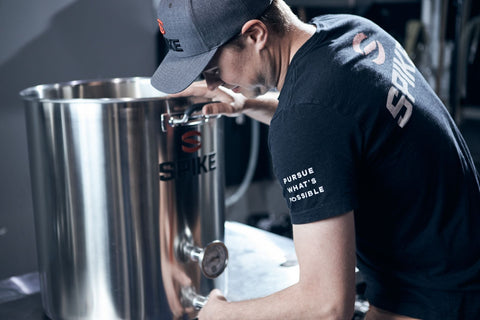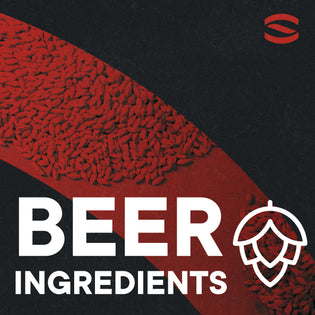Imagine it: it’s Sunday night at home. You’re having your favorite beer and the game is on. The Sunday scaries at bay (for now). What game? Doesn’t matter but the beer is what you’re enjoying most of all. You raise your bottle and steal a glance, wondering what a night this would be without your favorite brew.
Then you pose the question, “who invented such a beverage?”
To answer plainly, there are thousands of beer brands around the world, but beer has its origin, a place of birth what have you. Beer is one of the oldest and most popular alcoholic beverages in the world. Its history can be traced back thousands of years, to the ancient civilizations of Mesopotamia and Egypt.
The origin of brewing is fascinating and the subject of intense research and debate. In this article, we will explore:
- The history of beer
- Ancient brewing methods (and the first beer ever brewed!)
- Development of modern brewing methods
- The use of modern ingredients, and the popularity of craft beer
Where Did Beer Originally Come From?
Germany? Germany. Most people think beer originated in Germany because of the well-known German drinking tradition. It's true that the majority of contemporary beer types developed in Europe (especially in Germany). But many historians believe it originated in the Middle East and was first brewed in ancient Mesopotamia.
The ancient Egyptians and Mesopotamians are often credited with the invention of beer, but there is evidence that beer was being brewed in other parts of the world as well.1 In what is now modern-day China, beer was brewed as far back as 7,000 years ago. There is also evidence of beer being brewed in ancient Peru and Chile.
Evidence Of Beer Brewing In Ancient Mesopotamia
The earliest evidence of beer brewing can be traced back to ancient Mesopotamia, where it was an integral part of their culture and religion. Beer brewing was so important to the ancient Mesopotamians that it was even mentioned in one of the oldest known written works, the Epic of Gilgamesh.
Brewing Technique:
The ancient Mesopotamians used a variety of techniques to brew beer, including a primitive form of distillation.2 This process involved boiling the beer in a pot, then condensing the steam and collecting the liquid. This method was used to make a variety of beers, from light and sweet to dark and bitter.
Storage Method:
Beer was stored in large ceramic jars called "qvevri" or "kuwapi." These jars were typically made from clay and were often lined with bitumen, a sticky black substance, to make them watertight. The jars could hold several gallons of beer and were used to ferment, store, and transport the beer.
Common Use:
The ancient Mesopotamians used beer for religious and social purposes. Beer was also used as a form of payment for labor and services, and it was even used to pay taxes. History shows that they used beer to treat a variety of medical ailments, including headaches and stomachaches.
Beer Brewing In Ancient Egypt
The earliest records of beer brewing in Ancient Egypt come from the tomb of King Narmer, who ruled around 3200 BC.3 In this tomb, there are depictions of workers harvesting and processing grain, and there is even a scene of a worker carrying a jug of beer.
This suggests that beer was an important part of Ancient Egyptian society, and it was likely consumed by all classes of people.
Brewing Technique:
The Ancient Egyptians used a variety of techniques to make their beer. They would often mix the ingredients together and then boil the mixture in large clay pots. The beer would then be cooled and left to ferment for several days before being consumed.
This method of brewing beer was similar to the method used by the ancient Greeks and Romans. The beer was also flavored with herbs, and this gave the beer a unique taste. The Ancient Egyptians also used a variety of additives to make the beer more palatable, such as dates, honey, and other fruits.
Storage Method:
The Ancient Egyptians developed a unique method of storing their beer. They would use large jars or amphorae, which were sealed with wax. The beer would then be stored in these containers for long periods of time, and the beer would remain fresh for up to several months.
Common Use:
Beer was a common beverage and was used for both pleasure and medicinal purposes. Ancient Egyptians also believed that beer was a gift from the gods and used it in religious ceremonies.
Who Invented Brewing Beer?
Ancient Egypt and Mesopotamia are credited with developing the art of brewing beer. It is thought that the first batch of beer was accidentally brewed when a grain-based gruel was exposed to wild yeasts in the air after being left out in the open. As a result, the gruel began to ferment, turning into a foamy, alcoholic beverage.
Ancient Brewing Methods
In Mesopotamia, beer was brewed from wheat and barley, while in Egypt, it was brewed from barley and emmer, a type of wheat.
The ancient brewing process was quite labor-intensive and began with the malting of grains. This involved soaking the grains in water for several days, then drying them in the sun or on hot stones. The malted grains were then ground into a coarse powder, which was mixed with water to form a mash.
The mash was boiled, then strained to remove the husks and other solids. The resulting liquid, known as wort, was then boiled again and flavored with herbs and spices. Finally, the wort was fermented with yeast, resulting in beer.
The ancient brewing process was quite different from modern brewing, as it was more of an art than a science. Ancient brewers had to rely on their senses to determine when the beer was ready to drink, as they did not have access to the sophisticated technologies used in modern brewing. As a result, ancient beer was often sour or bitter and could be quite strong.
What Was The First Beer Ever Brewed?
Gruit, a sort of beer, is thought to have been the first beer ever brewed. Gruit was made with a combination of herbs, spices, and other ingredients such as bog myrtle, yarrow, and heather. Up to the 16th century, when hops started to be used as a bittering ingredient in beer, this variety of beer was widely consumed in Europe.

Development Of Modern Brewing Methods
Since the Middle Ages and up until the present day, there have been constant efforts to create contemporary brewing techniques.4 The art of making beer has evolved along with technology.
A quick look at how these methods have developed over the years:
- Middle Ages: In the Middle Ages, beer was brewed using primitive methods that were often inefficient and time-consuming. Beer was typically brewed in large open vats, with the ingredients added in whatever order the brewer chose. This resulted in a beer with inconsistent quality, as the ingredients were not always mixed in the same proportions.
- 16th Century: The invention of the hop press in the 16th century allowed brewers to create more consistent beers by pressing the hops into pellets and adding them to the wort. This invention also made it possible for brewers to utilize more hops, which led to a more bitter and hoppy beer.
- 19th Century: In the 19th century, the invention of the thermometer allowed brewers to measure the temperature of the wort more accurately, this enabled consistent fermentation.
- 20th Century: The hydrometer was created in the 20th century, which improved brewers' ability to gauge the specific gravity of the wort. Brewers were able to manufacture beers with more consistent alcohol levels as a result.
- Modern Brewing: Brewers were able to more effectively separate the sediments from the liquid thanks to the development of the centrifuge in the late 20th century. As a result, brewers were capable of producing clearer beer with fewer suspended particles as a result.
Today, modern brewing methods are more efficient and precise than ever before. Brewers can control every aspect of the brewing process, from the temperature of the wort to the specific gravity of the beer.
Use Of Modern Ingredients
The use of modern ingredients in beer brewing has revolutionized the industry and opened up a world of possibilities for craft brewers. The traditional ingredients of beer are water, barley, hops, and yeast, but modern brewers have experimented with a variety of new ingredients to create unique flavors.
Common modern ingredients include wheat, rye, corn, oats, spices, fruits, and even chocolate. Additionally, many craft brewers use unique hop varieties to create unique flavor profiles. Here are some of the uses of modern ingredients:
- Wide Appeal: By incorporating these modern ingredients, craft brewers can create beers with a wide range of flavors and aromas. This has made it possible for craft brewers to produce a variety of appealing beers for customers.
- More Tolerable Alcohol Content: The use of modern ingredients has also allowed craft brewers to create beers with a lower alcohol content, which is appealing to many consumers. Craft brewers are now able to produce more approachable and sessionable beers as a result.
- Gluten-Free: Craft brewers can now produce gluten-free beers, which appeals to many customers who have dietary constraints, thanks to the use of modern ingredients.

Popularity Of Craft Beer
Breweries are opening up all around the world at an ever-increasing rate, which has increased the appeal of the craft beer movement. The term "craft beer" refers to alcoholic beverages produced in small batches by independent brewers utilizing conventional and/or cutting-edge techniques and ingredients.
Since the late 1990s, the craft beer market has seen substantial growth; currently, more than 7,000 craft brewers are operating in the US.
A quick look at things you should know about craft beer:
- Craft beers often have a higher alcohol content than mass-produced beers, and are often more expensive due to the higher cost of ingredients and the smaller batch size.
- It has also been embraced by foodies, who appreciate the complexity of craft beers and the way they can pair with different types of food.
- The craft beer movement has also been embraced by those who are looking for an alternative to mass-produced beer, as craft beers often have a more distinct flavor and are made with higher-quality ingredients.
- Many craft brewers are using sustainable practices, such as using locally sourced ingredients, recycling, and using renewable energy sources. This has made craft beer a popular choice for those looking to reduce their environmental impact.
- Craft beer festivals, tap takeovers, and beer dinners have become popular events for craft beer drinkers to come together and share their love of beer. This has made craft beer a popular choice for those looking for a more social experience.

Homebrewing Beer
Certainly, brewing at home in America has become more popular recently. However, in Northern Europe the tradition of brewing at home goes back centuries. Fun fact, it was considered to be a household chore, commonly only done by women.
Simply put, homebrewing is the process of making beer on a smaller scale, usually at home. Homebrewers have the freedom to experiment with different recipes and techniques to create a beer that is unique to them
This can be an enjoyable and rewarding adventure. It can also be an economical way to make beer, as homebrewers can save money on ingredients and equipment. Homebrewing kits are widely available, making it easy for anyone to get started. Brewing at home can be a great way to learn more about beer and explore the world of beer. Many home brewers also join homebrewing clubs, user groups or organizations, which can provide support and advice to new brewers.
Homebrewing beer can be as simple or as complex as the brewer desires. If you’re looking at brewing your beer at home, we’ll walk you through it. Time to have fun with some homebrewed beer.
Final Thoughts: Brewing For A Modern Age
With this, you can rest assured that your Sunday night’s game will not be hampered by questions about the origin of beer.
The origin of beer brewing is shrouded in mystery, but evidence suggests it has been around for thousands of years. Beer brewing has evolved over the centuries, from the ancient methods used in Mesopotamia and Egypt to the modern methods used today.
Beer brewing has become a popular hobby for many people, with craft beer becoming increasingly popular in recent years. Homebrewing kits are readily available, allowing anyone to make their own beer from the comfort of their own home.
If you’re looking to get started on brewing your beer at home, join a community of homebrewers, or get your brewing supplies; check out the Spike Learn page or simply contact us, and we’ll get you where you want to go and have a little fun along the way!
Sources
- Andrews, E. (2014, January 8). Who invented beer? History.com. Retrieved from https://www.history.com/news/who-invented-beer
- Ane today - 201704 - potent potables of the past: Beer and brewing in Mesopotamia. American Society of Overseas Research (ASOR). (2020, May 16). Retrieved from https://www.asor.org/anetoday/2017/04/brewing-mesopotamia/
- ABC News. (2021, February 14). 'the oldest brewery in the world': How the Egyptians made beer more than 5,000 years ago. ABC News. Retrieved from https://www.abc.net.au/news/2021-02-14/egypt-unearths-oldest-mass-production-brewery-in-world/13153822
- Debczak, M. (2021, April 6). A brief history of beer. Mental Floss. Retrieved from https://www.mentalfloss.com/article/643219/beer-history





